Aquilegia chrysantha, Golden Columbine
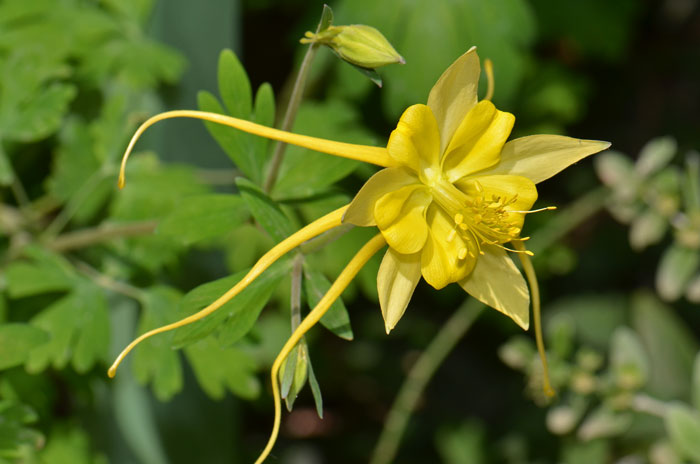
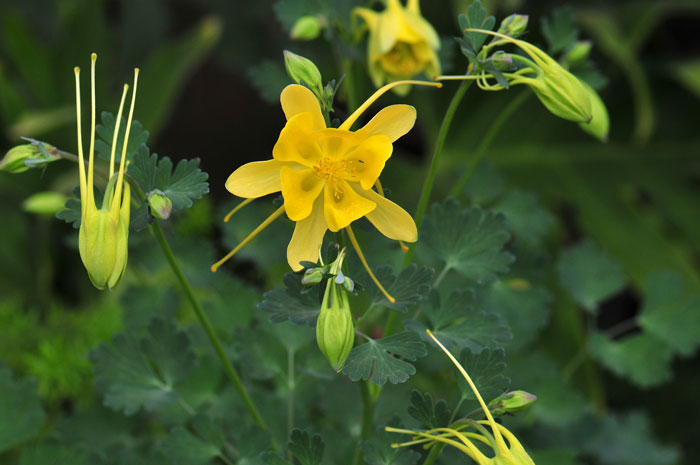
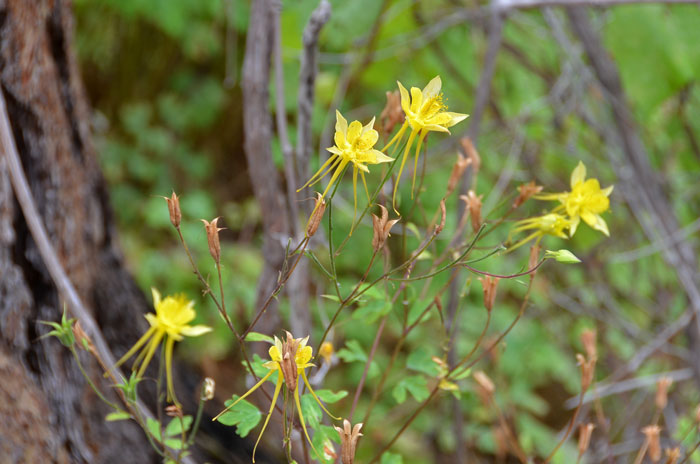
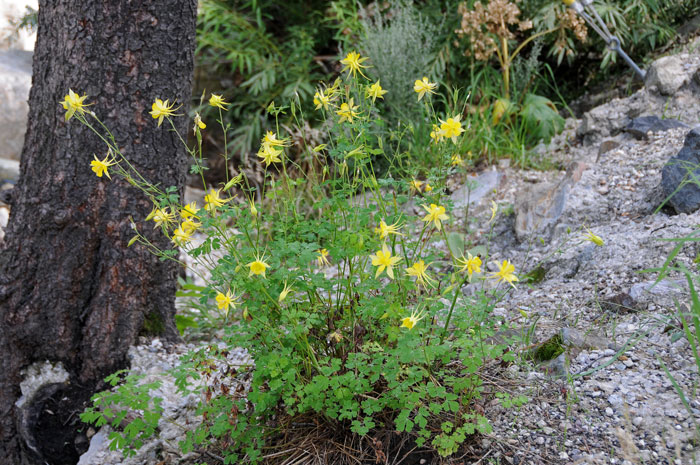
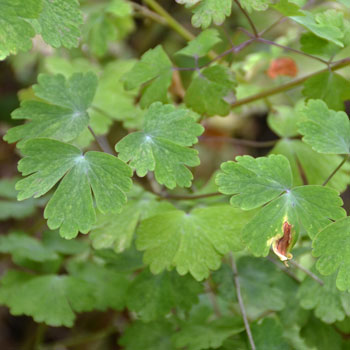
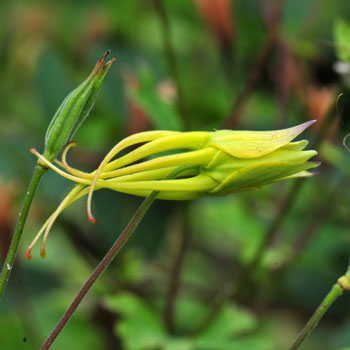
Scientific Name: Aquilegia chrysantha.
Common Name: Golden Columbine
Also Called: Southwestern Yellow Columbine, Yellow Columbine
Family: Ranunculaceae, Buttercup or Crowfoot Family
Synonyms: ()
Status: Native
Duration: Perennial
Size: Up to 3 feet more or less.
Growth Form: Forb/herb; slender woody rhizomes, bushy, several stems.
Leaves: Green; basal and cauline; cauline leaves with long petioles, alternate, leaf 1 to 3 times ternately compound, leaflets lobed or parted, margins crenate.
Flower Color: Yellow, canary-yellow flowers; erect, in cymes or solitary; radial symmetrical, both sepals and petals may be white to blue, yellow or red; flower with tubular spurs at the back;
fruit a cylindric sessile follicle; seeds black.
Flowering Season: April to September.
Elevation: 3,000 to 11,000 feet.
Habitat Preferences: Rich moist soil, moist canyons, along desert riparian areas and in pine communities.
Recorded Range: Aquilegia chrysantha is relatively rare in the United States and its' varieties even more so. They are found in the southwestern United States in: AZ, CO, NM, TX and UT. The largest populations occur in Arizona with populations almost throughout the state but with few or no records found for Greenlee, Pinal and Yuma counties; New Mexico has decent populations in the central, southwest and southern parts of the state; Utah has a population in the southern part of the state in Washington county; Texas has a few populations scattered about and Colorado has the smallest limited to El Paso county (var. rydbergii); It is also native to northern Mexico.
North America & US County Distribution Map for Aquilegia chrysantha.
U.S. Weed Information: No information available.
Invasive/Noxious Weed Information: No information available.
Wetland Indicator: In North America Aquilegia chrysantha, Golden Columbine has the following wetland designations: Arid West, FAC; Great Plains, FACW; Western Mountains, Valleys, and Coast FAC.
FAC = Facultative, occur in wetlands and non-wetlands
FACW = Facultative Wetland, usually occur in wetlands, but may occur in non-wetlands.
Threatened/Endangered Information: In North America Aquilegia chrysantha var. rydbergii is listed as a "Sensitive Species" by the U.S. Bureau of Land Management (BLM) and U.S. Forest Service (FS) and is ranked critically imperiled (S1) by the state of Colorado. This species is "Fully Tracked" by the Colorado Natural Heritage Program. According to Ladyman 2005, it is "Most vulnerable to habitat loss caused by activities associated with recreation".
In Arizona there are 7 species of Aquilegia, California, Nevada and Texas have 3 species, New Mexico has 5 species and Utah has the most with 12 species. All data is approximate and subject to taxonomic changes.
There are 2 varieties in Aquilegia chrysantha;
Aquilegia chrysantha var. chaplinei, Chaplin's Golden Columbine (NM, TX;
Aquilegia chrysantha var. chrysantha, Golden Columbine (AZ, NM, TX, UT));
Aquilegia chrysantha var. hinckleyana, Hinckley's Golden Columbine (TX);
Aquilegia chrysantha var. rydbergii, Rydberg's Golden Columbine [1] (AZ, NM, CO).
Comments: Aquilegia chrysantha is found in both the Chihuahuan and Sonoran deserts and is a food source for hummingbirds and insects, including bees and butterflies. Golden Columbine is perhaps one of the most attractive plants in the southwestern mid- to upper-deserts. This species is the most abundant and beautiful columbines with its' large showy flowers and long elegant rear-facing spurs. Golden Columbine occurs across a wide latitudinal range

